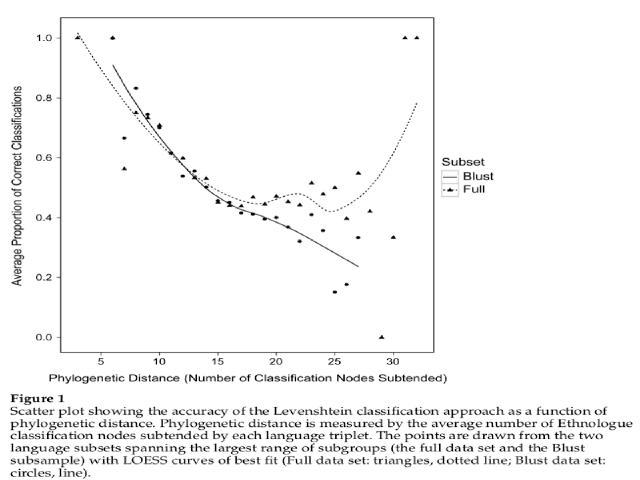Levenshtein distances fail to identify language relationships accurately

Authors:
Citation:
Details:
Published: 7 July, 2011.
Download:
Abstract:
The Levenshtein distance is a simple distance metric derived from the number of edit operations needed to transform one string into another. This metric has received recent attention as a means of automatically classifying languages into genealogical subgroups. In this paper I test the performance of the Levenshtein distance for classifying languages by subsampling three language subsets from a large database of Austronesian languages. Comparing the classification proposed by the Levenshtein distance to that of the comparative method shows that the Levenshtein classification is correct only 40% of time. Standardising the orthography increases the performance, but only to a maximum of 65% accuracy within language subgroups. The accuracy of the Levenshtein classification decreases rapidly with phylogenetic distance, failing to discriminate homology and chance similarity across distantly related languages. This poor performance suggests the need for more linguistically nuanced methods for automated language classification tasks.
Related links / Media:
Nothing found.